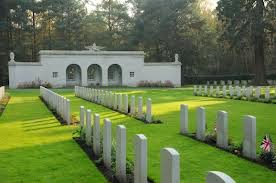 |
| http://www.victorianlondon.org/images/unitedservicesmuseum.gif |
I can see why people are attracted to the nostalgic and more traditional museum experience. I walk into my shift and am greeted by that familiar musty museum smell, the dark lighting and dated interior. It’s like stepping back in time and seeing the ways of old through a familiar medium. You know what you’re going to get. There are going to be galleries with glass cases which enclose the artefacts and besides them panels of text. There might be trail clues up on the wall to encourage children to engage with the exhibits but it is unlikely there will be anything to pull or push or to physically interact. You walk around and read, all the while staying quiet so as to adhere to that unwritten rule that enforces silence on museum visitors. I find the whole thing completely bizarre, if you’re going to be reading vast quantities of text, at the very least you should feel able to talk about it! It’s also quite an isolating thing to experience for that very reason. You can arrange to visit in groups but often you will wander at your own pace, stop at the bits that interest you and exchange only a rare word with a companion.
 |
| http://chertseymuseum.org/ |
Don’t get me wrong going to a museum where there aren’t any
artefacts or panels of text to read only interactive screens and the like,
would be an equally odd situation. I think there needs to be a happy medium
between the traditional way of doing things and a way more suited to modern
society. The example of the Science Museum springs to mind. It is educational
and informative but there are lots of activities to interact with and no one is
too worried about talking to each other. I strongly feel that history museums,
whether local, regional or national, should be striving for similar results. I
agree with philosopher Hilde Hein that museums have become more ‘people
centred’ and rather than pine for the old ways, I think museum staff should be
embracing that and using it to their advantage, especially as the heritage
sector faces budget cuts and they begin to rely even more heavily on visitor
admissions and donations. Admittedly, there is a fine line between successful
interactive exhibits and ones which ‘disneyfy’ the past, but it is something
local museums should be thinking about, even if on a scaled down version.
 |
| chertseymuseum.org |
I struggle to see the negative side of this shift in museum design. There is no denying that museums have generally moved towards more interactive and engaging methods of communicating the past - touch screens, oral history, puzzles and games, trials, sound effects and all these things add to visitor experience in some way shape or form. I think we’ve generally come to expect more from museums now and I don’t think that is something that they should shy away from. As Annette Day argues, ‘Multimedia technology is a common mans of communication today, especially among young people. As a consequence, information presented in this way is often more accessible because it utilities familiar routes of comprehension, in addition to the deeper engagement facilitated by physical interactivity’.[1] And in that sense perhaps it is a generational thing. I am unsure of the age of the person who made that original comment, but I think perhaps it was someone more mature, for I would have to admit that I am finding it increasingly difficult to focus my attention on museum exhibitions for prolonged periods of time, especially if they are of your more traditional type.
 |
| http://www.britishmuseum.org/explore/highlights/ |
The Museum of London for example, offers a very different visitor experience. Yes there were the more normal type of galleries with artefacts in glass cases, but interwoven around those were clips of oral history, a recreation of a pleasure ground, a prison cell which you could stand in and a Victorian street complex – I would add that sounds effects and even smells would have made this even better, but all of these methods of display were very engaging. There wasn’t time to ‘turn-off’ because you were moving onto something else which required you to interact with it in a different way. The MoL offers something completely different to the local museum I volunteer at, partly because circumstances mean that it can – but I don’t think that should mean that local museums shouldn’t strive for similar results. The fact is, the younger generation are growing up with technology and a desire to interact with those things from which they are learning and a failure to incorporate that into museums, at least to some degree, will alienate them from museums in the future. I think there is a real danger in being labelled “refreshingly old fashioned” for that would not appeal to the majority and it is in their hands that the future lies.
[1] Annette Day, “Listening Galleries: Putting Oral History on
Display,” Oral History 27:1 (1999): 95.










